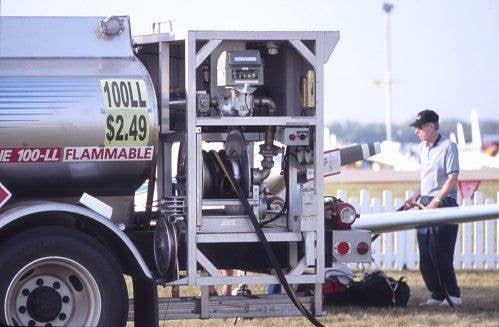The Drip, Drip Of Bad Publicity About 100LL
The more the industry drags out phasing out 100LL, the more susceptible it is to looking unconcerned about public health risks.

For the 40-odd years we’ve been trying to eliminate tetraethyl lead from avgas, general aviation has been a target of opportunity for dirty-little-secret headlines. The industry’s amazing persistence in preserving this problem has cost me at least several pairs of shoes trooping to press conferences where the various “stakeholders” offered progress reports we were all expected to believe revealed movement toward a solution. The latest of these is EAGLE, which now sets the goalpost at 2030, another at least seven years away.
Meanwhile, yet another poisoning-the-planet story appeared this week in Politico. It checks all the boxes, with most of the right sources and although it has some errors and assigns too much blame to ASTM’s sclerotic grind, it’s generally a fair story. It ignored how Santa Clara County withheld EPA findings about measured airborne lead levels around Reid-Hillview airport and that the Bay Area Air Quality agency stopped lead monitoring because levels were below EPA minimum standards. But a more recent study on blood lead level data showed that irrespective of airborne levels, BLL’s near Reid-Hillview were higher than might otherwise be expected. Read the full study here and decide for yourself. To me, this is compelling enough to merit further review.
On the other hand, why? We’ve committed to eliminate TEL yet, at an industry level, we resist it kicking and scratching all the way. The safety argument and entreaties about the difficulty of transitioning are wearing thin. It’s a persistent bad look for the industry that only gives anti-airport forces a potent tool effective with an ill-informed public.
I really doubt that Reid-Hillview and other pressured airports in high-rent districts will survive until EAGLE’s aspirational goal of 2030. And California being California, there’s a statewide push to switch more rapidly to unleaded fuels than is realistic. It can’t be done in six months, but it shouldn’t take seven years, either.
You may have forgotten that what got General Aviation Modifications Inc. on the road to pushing G100UL across the finish line was George Braly’s belief that EPA’s lead health risk data would propel the agency to require its elimination before the industry had a ready replacement. That’s not the same as saying the health data represented a true risk, just that the EPA would use it as a cudgel. That’s in fact happening, but at a glacial pace. Many owners and pilots, rightly I think, are skeptical of the health risk claims so the ostensible argument to switch is that unleaded fuel is just better for engines. Eliminating TEL from the environment is a socially positive collateral.
I can’t prove this. No one can in anything like a long-term, large-scale study. Experience with unleaded autofuel is anecdotal and poorly documented and the Embry-Riddle durability test of G100UL in 2014 was only 150 hours. That’s not enough, in my view, to show large-scale benefits. I think it will take a year’s worth of highly controlled fleet trials over a lot of hours.
Promise was on the horizon when the University of North Dakota’s large training fleet was set to switch entirely to 94UL this year. This promised data from a large and consistently operated fleet that, in my view, would have yielded definitive answers on whether—or maybe if—unleaded fuels really do reduce maintenance costs to justify potentially higher costs, at least for 100-octane versions.
It didn’t happen. UND’s 100LL supplier made the school a price offer it couldn’t refuse and the school did what any of us would. It stuck with the status quo and is thus a beneficiary of oil companies doing what all companies do: Protecting a market with pricing power against a competitor that has less, if any, leverage. This sort of thing will continue to be a barrier to fielding unleaded fuel in both high and low octanes until the EPA finally publishes rules prohibiting TEL. And that will continue to complicate unleaded fuels gaining rapid market traction.
In the meantime, another thing will continue. The slow drip, drip, drip of news stories that paint aircraft owners as self-centered rich kids unconcerned about or unaccepting of their toxic emissions poisoning kids. While you and I may know this as not being true, if the defense of it is another four-letter FAA program that promises salvation in seven years on top of one that was already a $40 million failure, as an industry, we just look pathetic. The best we can hope for at this point is for the FAA (and the alphabets and engine manufacturers) to get out of the way of GAMI trying to field G100UL through a whisper campaign that suggests it hasn’t been tested and we don’t know what’s in it. The FAA knows what's in it. They oversaw its testing and so did Embry-Riddle.






